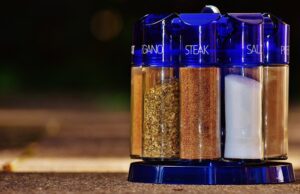
Tidying up is something you do as a teenager to get your parents off your back. Since you are not 13 any more, stop tidying up and get to the root of your problem instead. Think: decluttering and organising.
First some definitions, listed from most to least beneficial…
Decluttering: Removing items you don’t need from your home. This provides the longest-term benefit. It goes deep and means that tidying up and organising can be done really quickly, if they are necessary at all. Minimalists spend almost zero time managing their stuff.
Organising: grouping your items and putting Like with Like, and/or assigning zones that correspond with access and use. This provides medium-term benefit. As long as you maintain the zones you have assigned, you will be able to find what you need. Having all socks in a sock drawer is an everyday example. If you have a lot of stuff and don’t declutter however, maintenance can be time-consuming. Socks are a breeze but keeping 120 Tupperware containers sorted with their lids is another matter entirely.
Shuffling: Also known as stuff-shifting and ‘churning’. This lesser-known but often-done process involves moving items around the home in a bid for improvement. For example:
- Picking everything up off the floor, putting it in a container and labelling it ‘miscellaneous’. Then feeling smug about it.
- Putting your old winter clothes into tubs or space bags because you bought newer replacements for them.
- Moving tubs from one room to another to ‘create space’.
- Hiring a storage unit or building a shed, again to ‘create space’.
- Moving items to a different spot because you are sick of looking at them or because you need to be reminded to deal with them.
- Using organising techniques like labelling and categorising to make things look neater. But not decluttering as you go.
Tidying: rearranging your visible belongings so they look nice. This may involve randomly shoving any excess into cupboards or tubs. (Relatable?) It’s the more frantic version of shuffling, and the least useful practice in my list. Can be handy if you have a house inspection or dinner party and you quickly want to tone down visible chaos. It provides only a short-term benefit because it is inevitable that you won’t be able to find what you need inside your cupboard.
Why Should I Stop Tidying Up?
A big part of tidying and shuffling is procrastination. Making decisions like discarding and donating is difficult, so we create systems of avoidance and delay. Pretty tubs and containers smooth the rough edges of our guilt and chaos. Buying more stuff is a lot more fun than culling.
The problem is, the time spent repeatedly handling our barely-used items often far outweighs their value.
How do I Stop Tidying Up?
- Group Like with Like to see the true volume of each category. Maybe you don’t need the 120 Tupperware containers after all.
- Declutter. Make a decision on everything you touch, and place it in the correct pile. (Rubbish, donate, relocate, etc)
- Deal with all your piles. Put the rubbish pile in the bin. Take the donate pile to the charity shop. If it needs to be somewhere else in your house, do it now. Return those library books or at the very least, put them in the car. Take one big step with your stuff to minimise the back-and-forth. Stop the shuffle!
- Remove as much as possible. Too much stuff is a life sentence to tidying and shuffling.
- Stop buying unnecessary impulse items.
Stop Tidying Up: TDLR
Stop wasting time managing your junk and get rid of it instead. Stop tidying up and start culling. The benefits are huge. See what a Professional Organiser’s house looks like here.






























